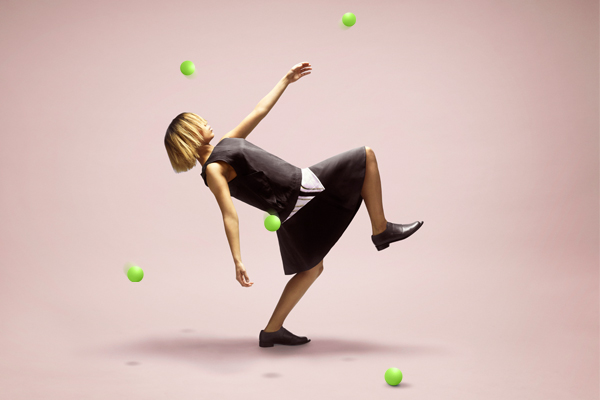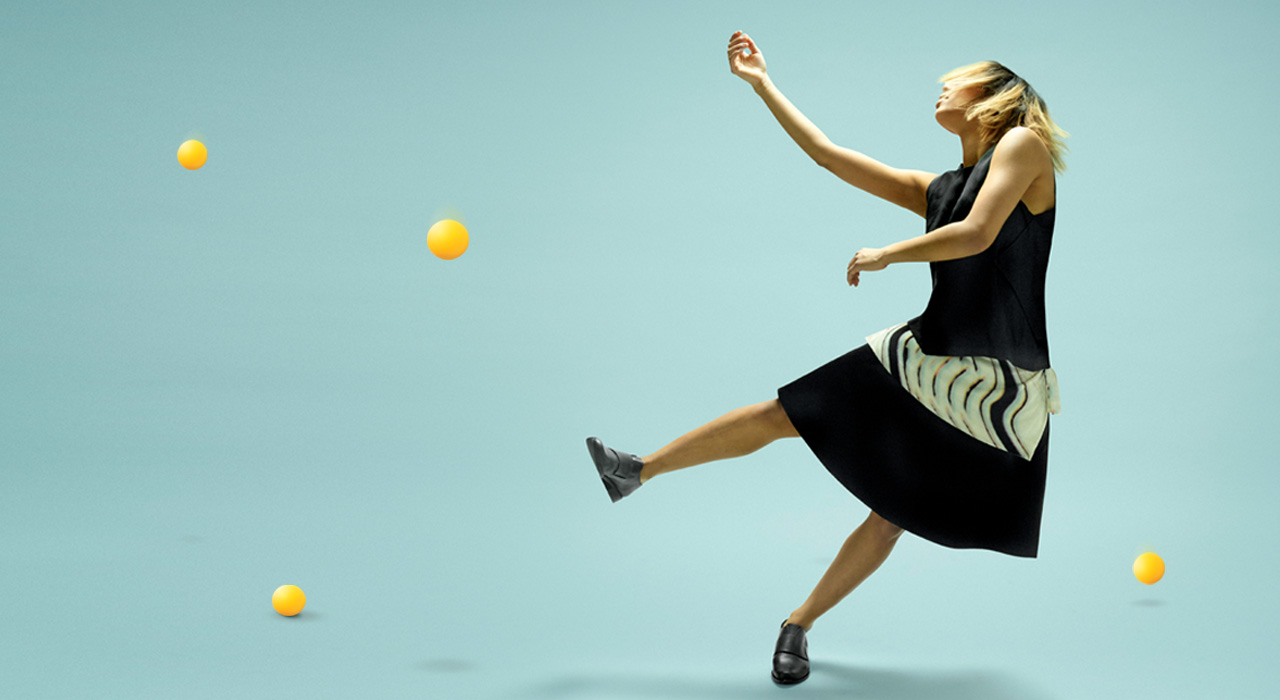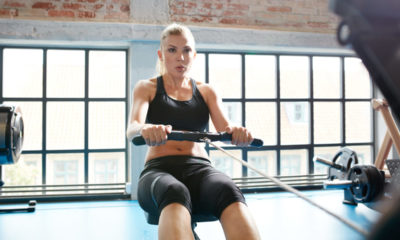Fitness
Why We Should All Throw Like A Girl
Grab your balls, girls, because it’s time to man up and learn to throw… or is it? What we thought we knew about women and sports is changing – and it’s time for a new attitude
As a girl, I was hopeless at throwing. I didn’t have the power or accuracy. My dad used to call me butter fingers because I couldn’t catch a ball properly either. I played netball, but was only goalkeeper in the school team for one reason – at nearly 6ft I was a giant compared to everyone else so could prevent the opposition from scoring just by raising my arms. Throwing and catching, however, were not skills I could call my own.
Where did it all begin?
I’m hardly a minority. Throwing “like a girl” is an insult bandied around for decades because, frankly, a lot of girls did (and still do) throw differently to boys. For example, a study published in Phenomenological Psychology in 1966 researched photos of girls and boys throwing, citing the following differences: “The girl of five does not make any use of lateral space. She does not stretch her arm sideward, she does not twist her trunk, she does not move her legs, which remain side by side… The ball is released without force, speed, or accurate aim…” The average boy, however, “supinates the forearm, twists, turns… moves his right foot backward… the ball leaves the hand with considerable acceleration…” and so on.
At the time, this led some academics to theorize ball-throwing and similar skills were simply things girls were naturally not good at. And, if you’re told you’re not going to be good at something, you’re probably not going to try all that hard. Fast- forward to today, though, and the myth that girls are not as good at throwing persists. This is why the TV show MythBusters put it to the test. The simplest approach, they thought, would be to ask people of different ages, male and female, to throw balls so they could analyze their skills.
First, they had them throw with their dominant arm. Then they had throw their non-dominant arm. The reason being that while both the boys and girls, men and women, had likely practiced throwing with their dominant arms, they wouldn’t have done the same with the non-dominant arm, so the test should indicate what level of natural ability the males had compared to the females.
The girls threw faster than the guys. (The guys tended to be more accurate in their aim, but this is something that could be down to practice while speed is not.) There were other differences: men tended to throw more horizontally, while women threw vertically. So, myth busted, throwing like a girl – especially in sports like baseball and cricket – could be a good thing as it could potentially mean a faster ball.
Other, more scientifically sound research has also tried to assess the differences between the genders. Prof Janet Hyde, who researches psychology and women’s studies at the University of Wisconsin at Madison sifted through data and studies to try to find what differences there are. She found significant differences in only two aspects of throwing – velocity and distance – and these differences, she concluded, are more or less worldwide. But these findings only prove that practice makes you a better thrower.
Starting young
Boys learn to throw young and do more throwing than girls. So then, the old question of whether it’s nature or nurture is raised. How much of what girls and boys can or cannot do is based on practice rather than genetics?
To try to assess exactly this, Jerry Thomas, a researcher from the University Of North Texas in Denton, looked at aboriginal children, where both girls and boys hunt and both throw from childhood. The results showed what he expected – the girls threw balls at much higher velocity than in other cultures and much closer to the speed of their male peers. But here’s the thing: there was, however, still a difference.
Girls, on average, threw around 20 per cent slower than the boys. This study also can’t prove that genetics is what’s at play, as aboriginal boys and girls will still be treated differently, may play differently and so on. But what’s interesting is that by taking part in a certain task (hunting), the girls were more on par with their male peers, strikingly different from their female counterparts in the rest of the world.
Exception to the rule
Of course, there are plenty of examples of women who have shown that females can, and do, compete as well – and better – than their male counterparts, given the right circumstances and possibly genetic basis, too. Ask Mo’ne Davis, for example, the 13-year-old who wowed the world with her 70mph baseball pitch, becoming the first girl to earn a win and to pitch a shutout in the Little League World Series. Or ask Julie Croteau, who was the first woman to play men’s NCAA baseball. Or Seana Hogan (ultra cyclist), Kelly Kulick (bowling), Pam Reed (ultra-marathon runner) and Danica Patrick (auto racing) – all sportswomen who have proven to be credible competition to their male counterparts, often beating them outright.
However, there are always exceptions to the rule and many would argue these women pro athletes are just that. What’s more, there are aspects of sport that are non-physical where women also appear to differ from men. Aggression, for example. To throw well it helps if you feel aggression towards your target. Compare throwing a ball to a toddler to throwing one at a poster of an ex who mistreated you, for example. In the case of the latter, you’ll put your whole body into it. This, some argue, is why women shouldn’t compete with men in certain sports.

What’s testosterone got to do with it?
Testosterone, the hormone that both women and men have but men have in much larger quantities, is linked to aggression. What’s more, many studies have indicated that men show more aggressive behavior than women – for example, one study of various countries by researchers at McMaster University, Canada, found men committed homicide 26 times more often than women.
With such a wide difference it’s hard to imagine that this could entirely be down to how boys are brought up or treated within society. Surely there must be genetics at play, too? What’s more, women are naturally not as big as men, whose arms are on average 75 per cent more muscular than their female counterparts. They’re also taller, with heavier, denser bones. Even their lungs are bigger.
Yet again, however, there are examples of women who have gone on to champion over men in what would be considered powerful, aggressive sports. We’ve got women such as Chyna who took on Je Jarrett in pro wrestling and won; Jackie “The Female Ali” Tonawanda, who defeated kickboxer Larry Rodania in 1975; and Katie Hnida who joined the men and became the first woman to score in an NCAA Division I-A game, US college football’s highest level.
A new generation
To prove that women can and should compete with men at their level in sports would require more than a handful of examples, however. And there’s only one way to do that – to encourage more girls into sport. Girls who, like me, assume they “throw like a girl” because they are female, not because they just haven’t had enough encouragement or practice. There are now many clubs or organizations offering sports training to girls and women, which will help encourage more of us be active and t at a competitive level.
As for me, I’d like to say that now I am a grown woman who is physically and emotionally strong, a woman who won’t let society or anyone else dictate what she can or can’t do because of her gender. That I throw a mean and fast ball that exceeds the abilities of many of my male counterparts and that I’d signed up to javelin-throwing classes, having discovered my inner Tessa Sanderson.
But that’d all be a big fat lie. Because the truth is, I still can’t throw well. In fact, I’d say I throw incredibly badly. Even now, when I play ball with my dog, it oftenends up far from where I was aiming.
But you know what? I’m just fine with that (and, for the record, so is my dog). I don’t need balls to prove I’m as good as any guy, and neither should any woman. But if balls are your thing, grab some.
If you want to build muscles strong enough to lift 500lb, go to it. And if all you want is a hot, sexy bod, go ahead, make it so. Because, ladies, there are no limits to being “like a girl”. The world is truly ours.
Five reasons why you should play sport
A meager 4% of female athletes are featured in the media, yet 40% of all pro athletes are women. Fortunately, this is changing with stars such as Ronda Rousey drawing bigger crowds in traditionally male sports.
It’s a sea change that should encourage all to participate in at least one sport per week – especially as research at the National Women’s Law Center found student athletes reap these rewards:
1. Higher grades than students who don’t
2. Are less likely to drop out of college
3. Are less likely to use drugs
4. Are more likely to graduate
5. Learn skills that will help them all of their lives
Find sport and fitness advice in every issue of TRAIN for HER magazine.














